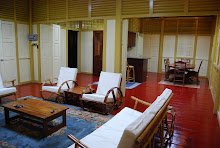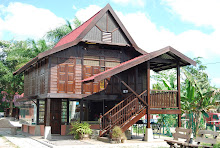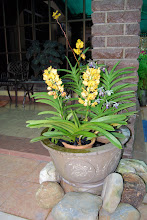The Old Market Place
It is fortunate if old buildings are saved from being demolished to make way for some supposed renovation or upgrading. Markets built previously in outskirt of cities, came to occupy strategic positions in current times. They would be likely favorite victims.
This wet market in Langkawi (opposite picture) thrived with fishermen landing their catches off the beach fronting it as late as 1970 and was a centre point for the folks of Langkawi who would get the freshest of seafood: fishes, crabs, prawns, cuttle-fish etc. in the early mornings. The fresh sea breeze that blew across its open courtyards and the friendly intimacy of sellers and buyers made for the the legendary characteristics of the island. Graciously it was saved. An entrepreneur and an architect by profession turned it into a gallery. An extension deck over the sea offered an open-air cafe. It became a popular spot when the island embarked as a free-port and a tourist center in 1988.
Alas when I was on the island in May 2007 it has disappeared. The picture taken a month earlier remained a stark reminder of properties that suffer similar fates due to the process of innovation and modernity. Have we lost anything? Perhaps the reminder of straight tubular white columns, pitched roofs and moments in the past when we bargained for a kilo of "temenung" fish for several cents rather than seven Ringgit Malaysia now. People of Langkawi got instead a wider road and the seashore a quarter kilometer away from its original.
It is a sight to treasure and congratulation to the owner for keeping his property in a splendid condition. This wooden house constructed in the tradition of northern Malaysia (Kedah) craftsmanship was likely built in 1950 or earlier. That would make it no less than 57 years old. I can vouch for its age as a similar house ( perhaps a little bigger and higher) was built by my father in 1947. It is still standing but sadly not as distinguished as this one. Such houses would have used good quality hard timbers obtained from the forests.
Shortage of hard wood plus dirge of carpenters and craftsmen saw its eclipse.
Its characteristics are enhanced by the open veranda and staircase in the front. The inner wooden staircase leading into the house proper has balustrades along its railings. The house is built on stilts. Thus it has free flow of air and an open atmosphere on the ground floor. No need to construct a garage somewhere else. Your vehicles: a motorcar, motorcycle and bicycle can be kept safely under the house. So too other household items if need be. In flood prone areas, this typical house would save the owner from worries.
No need for air-conditioning. The wide open windows and air vents above them keep the house cool. The living room would occupy the front section of the house with the bedrooms being in the middle. The kitchen and bathroom would be at the back of the house.
Graced with curtains, paint works and landscaping it makes an ideal home. Not surprising therefore hoteliers are scouting for similar vintage homes to be rebuilt in touristic zones and selling for no less than several hundred Malaysian Ringgit for a night. An advertisement can appear as " Spent a Night in a Malay Ancient Palatial Home". No need to extend that much of cash. Call me if you need to see such homes.













1 comment:
Pak Non
Sad to read the Old Market building in Kuah is no more. Used to have lunches there. Once took off to Pulau Singa Besar on a boat from its jetty. I wonder what's taking its place now. Not another car park I hope!
Post a Comment